The iconic British marque, BSA, is back with an all-new single-cylinder Gold Star. The renowned badge had been dormant since the early 1970s but now, under new Indian ownership, the Goldie rides again
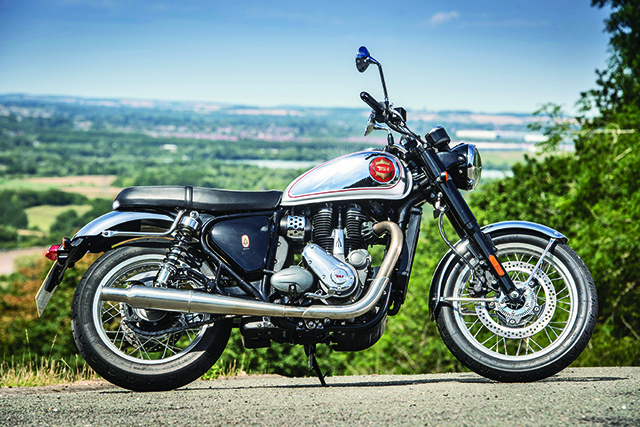
Story: Adam ‘Chad’ Child
Photography: Gareth Harford, Woodcote Events
At first sight, the 652-cc single looks fresh out of the 1950s, but do not be fooled. It is fuel-injected, liquid-cooled, and Euro 5-compliant; it has Brembo brakes and ABS, modern handling, quality Pirelli rubber—and no kickstart.
We spent a day testing it at the Millbrook Proving Ground a short ride north of London. Will the new take on the Gold Star be worthy of such a prestigious name?
BSA was, in the 1950s, one of the world’s largest motorcycle manufacturers and as dear to lovers of Brit irons as any Triumph or Norton. But if you are below 60 years of age, you may be wondering what all this nostalgic fuss is about.
BSA is actually an initialism of Birmingham Small Arms Company Limited. Yes, the company originally made ammunition and firearms and there is still a rifle symbol on the Goldie’s side-panel today. Based in England’s second city, Birmingham, the company later manufactured bicycles and eventually motorcycles, with its first powered two-wheeler unveiled in 1910.
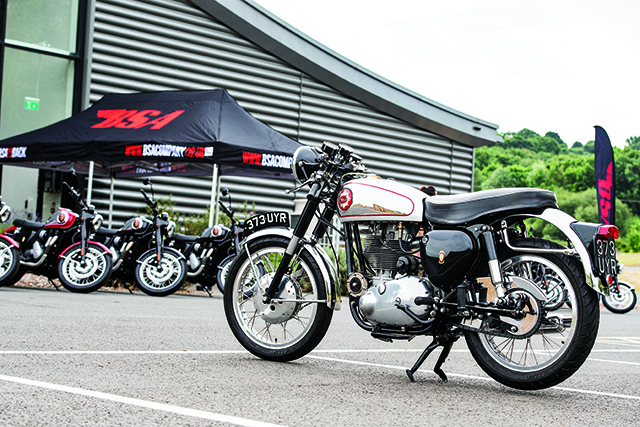
BSA’s most famous model was the Gold Star. Available as a 350 and 500 (from 1938 to 1963), the 500 was the one to have and very much the Ducati 916 and Honda Fireblade of its time. It was a genuine ton-up machine capable, in fact, of 177 km/h. Its speed and handling were proved on the track, taking victories at the Isle of Man TT and Daytona. In the ’50s, BSA was the biggest bike brand in the world, with one in every four motorcycles sold being a BSA.
In common with many of us with biking dads, my father told me how a Goldie was his dream bike. ‘You’d never take on a Gold Star as it was a proper ton-up machine—and more,’ he said. In the 1950s and early ’60s, long before you had to wear a helmet, there was no real speed limit out of town and you can see why the Gold Star was so popular in Britain as well as the USA: flat cap on backwards, plus flying goggles, old wartime flying jacket… next stop: 160 km/h.
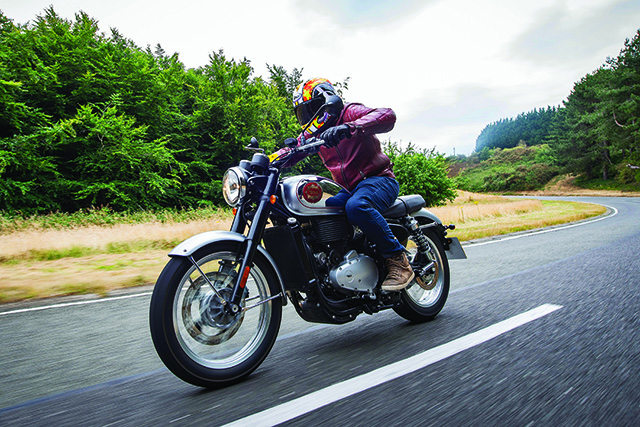
Sadly, despite such success, BSA fell into financial difficulties and, in 1973, stopped production. After decades of rumoured restarts, the brand was bought by Classic Legends Private Limited, a subsidiary of the Mahindra Group, in 2016, and, in 2021, BSA Company Ltd unveiled its first model, the rebooted and suited 652-cc single-cylinder modern Gold Star.
The 2022 Goldie is currently made in India, with production scheduled to move back to its spiritual home of Birmingham in time. It features a 652-cc fuel-injected, water-cooled single, producing 45 hp at 6,500 rpm and 55 Nm at 4,000 rpm. As you would expect, BSA claim the motor is good for 160 km/h, just like the original 500.
You will be happy to hear that there is now an electric start instead of the notoriously difficult kickstart of old. But there are no electronic rider aids or riding modes to worry about. Get on, turn the key, and ride.
The DOHC single started life as a Rotax, previously used by BMW, with a conventional wet sump below the engine. However, little of that engine remains; the sump, for example, is now dry with the oil tank hidden behind a side-panel, much as it was in the original. BSA also wanted to make the engine aesthetically pleasing to the nostalgic eye—and removing the sump allowed the engine to sit lower in the chassis, ensuring the cylinder block could be positioned proud and upright while the fuel-tank and seat could be aligned so that the line from the bottom of the fuel-tank flows to the underside of the seat.
Turn the key and the analogue, “anti-clockwise” clocks come alive. The warning lights, set above in a neat round dial, are also pleasing to the eye and perfectly retro. But it is a shame about the slightly cheap/1980s-style switchgear.
Press the electric starter button and the single burbles with energy. A few blips of the throttle and, for a Euro 5-compliant machine, there is a nice rasp to it. For a standard production bike, it does not sound half bad.
The fuelling is a little sharp, not snatchy exactly, just not as fluid as I was expecting as the throttle is opened and closed and opened again. It is always a challenge to get low-speed fuel-injection right on a single and BSA has done… okay. Call it B+. Once rolling and with the throttle already open, it pulls effortlessly. Around town, the Gold Star will be a doddle to ride, especially thanks to a relatively smooth gearbox and usable torque from 2,000 rpm (which peaks at 4,000 rpm before gradually tailing off). The engine is as friendly as my pub landlord’s old sheepdog and new riders—or those of more advanced years coming back to biking thanks to the resurgent BSA—will love the ease of use of the single.
It is not slow either. Strangely, the original Goldie, designed shortly after WW II, is faster, but the 2022 bike is more than capable of keeping up with and passing modern-day traffic. In top gear, 4,500 rpm, just above peak torque, equates to 110 km/h; hold 5,000 rpm and the Goldie will happily cruise at 130 km/h. 160 km/h is achievable, too, but for more, you need to tuck in, hold on to a fork leg, and drop your chin on to the chrome tank. With luck you should see an indicated 175 km/h.
I did this several times.
The BSA tops the scales at 198 kilograms dry, so is relatively light compared to other bikes in this category. It also comes equipped with Pirelli Phantom Sportcomp rubber on 18/17-inch spoked alloy rims. Forty-one-millimetre forks, with traditional shrouded stanchions, are non-adjustable but the rear twin shocks have adjustable pre-load. Brembo brakes and Continental ABS complete a simple but pleasing rolling chassis.
As you would expect, the Gold Star is set up for a comfortable ride (on an accommodating flat seat) but this is no wallowing waterbed. It is a fairly calm and serene performer: the rear does not overly sit down under acceleration while normal use of the brakes hardly gets the forks in a twist. If you hit some aggressive bumps or undulations, the rear does react and sit a little too much, though how much will depend on the weight of the rider or if you carry a pillion. A little preload added to the shocks will be beneficial should you carry weight, luggage or a pillion—or just enjoy good food.
I was surprised how well the front turns at low speed; manoeuvrability in town should be excellent, which, I suppose, is down to a low centre of gravity. At higher speed, however, when braking towards a corner, the BSA is a little reluctant and wants to sit up. Far better to let the stoppers off early, steer positively, and let it roll happily into sweepers as if it is 1956 all over again.
Once into the turn, ground clearance is impressive for this type of bike. You would have to be pretty determined to get the pegs to scrape, especially on smooth surfaces. Throw in a heavier rider and a bumpier road and that may change but there is always plenty of confidence-inspiring grip coming back from the Pirelli Phantoms. There is no complication to riding the Goldie briskly and new or inexperienced riders will relish this ease of use.
Comfort-wise, the ergonomics feel natural and appear to work for all sizes. The seat is comfortable enough (over an admittedly short riding session) and the single-cylinder engine is relatively vibration-free at speed. However, the speedo needle did like to bounce around on test when above 110 km/h, which could be interpreted either as charismatic or annoying—only time will tell.
BSA quote 25 km/l and the low-revving engine should indeed prove frugal. Combine that with a 12-litre tank and potentially you are looking at 290 km before the Goldie runs dry. We do not yet know how intrusive engine vibes will be after a few hours in the saddle or whether the mirrors are any good. But first impressions are positive.
There is a single disc brake up front, featuring a Brembo caliper, braided lines, and ABS by Continental. BSA have not cut corners in this department as the stoppers are impressive for this type of bike: progressive at urban speeds and certainly not intimidating for new riders, but strong enough to haul up 213 kg (once fully fuelled) from speed. The ABS is a little intrusive, especially on the rear, but I came away from the test with a good first impression.
The slightly incongruous USB-A and C charger is useful but looks like it has been thrown in at the last minute and does not match the classic look of the bike. Some will love this; some will remove it immediately. BSA are working on an array of accessories, including luggage, screens, crash protection, and, obviously, branded clothing. This BSA looks easy to modify and, personally, I would like to see some dropped bars and a racy exhaust; maybe, some setback pegs, too, that edge it towards a café racer look.
Oh, I nearly forgot: no electronic trickery and rider aids on this one. They are simply not required.
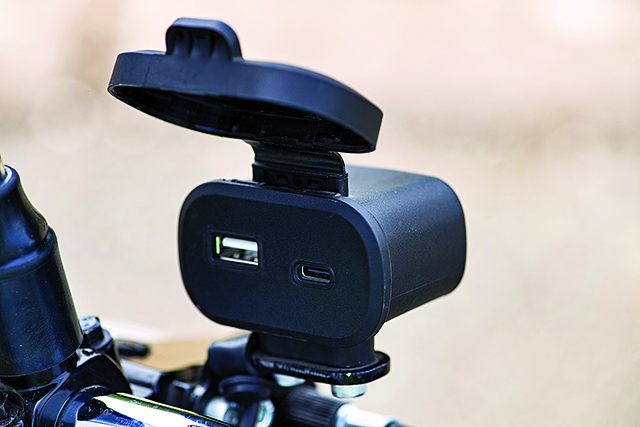
Prices start at a very attractive £6,500 (Rs 6.18 lakh) for the base Highland Green Edition, rising to £6,800 (Rs 6.46 lakh) for the Insignia Red, Midnight Black and Silver edition,
with the top-spec Silver Sheen Legacy priced at £7,000
(Rs 6.65 lakh).
Despite being an air-cooled twin-cylinder machine, the closest British rival to the BSA is probably Royal Enfield’s Interceptor, which starts at £6,039 (Rs 5.74 lakh; in the UK). Triumph have the twin-cylinder and much more powerful Bonneville T100 at £9,395 (Rs 8.93 lakh) and Kawasaki have the classy-looking W800 at £9,099 (Rs 8.65 lakh), if you can still find one at a dealership.
The Gold Star is keenly priced but does not appear or feel cheap. Quality Brembo brakes, excellent Pirelli rubber, and the anti-clockwise clocks will be pleasing to own. Only the odd switchgear, which looks as if it has been borrowed from a 1990s keyboard, and the odd placing of the USB charger on the bars tarnish the effect.
So, it is great to see BSA back, especially as they have done a great job with the Gold Star. The new Indian owners could have easily produced a vibrating and supremely average café racer, but instead have made a fresh and carefully designed reboot of a much-loved classic.
The motor looks handsome, is smooth for a single, and has just enough punch. It is fun to run through the corners—ground clearance is impressive for this type of bike—and the brakes work well. The period clocks and twist-off fuel cap and even the remote oil tank are cool touches.
Some purists may wish they had not used the prestigious Gold Star name, as it is not a legendary race bike like the original—and that is my personal opinion, too. But at less than £7k (Rs 6.65 lakh), you can afford to have it lovingly stored at the back of the garage for the odd evening or Sunday blast, open-face lid and jacket and jeans at the ready. If this is the beginning of a new BSA era, we are off to a flier.
Also read: Jawa 42 Bobber Launched

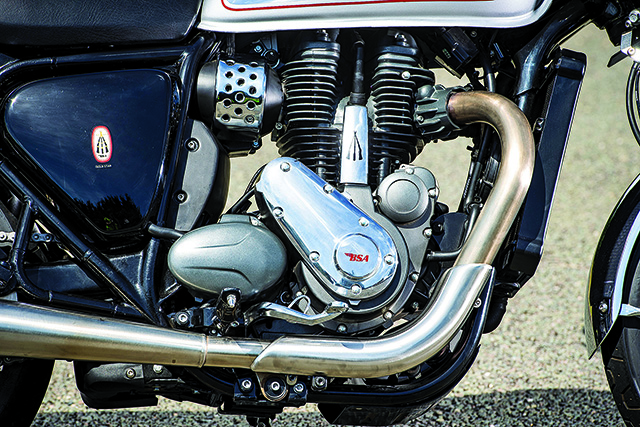
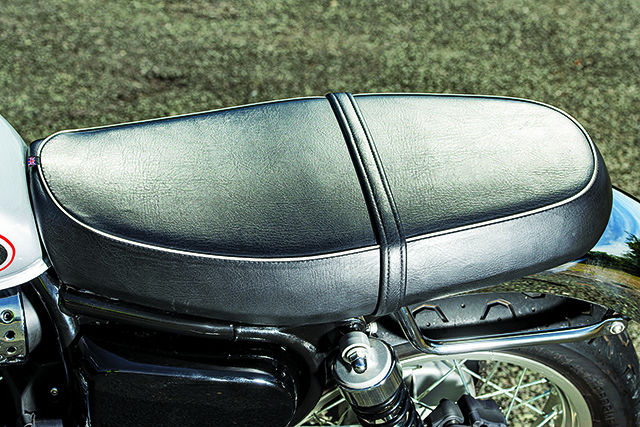
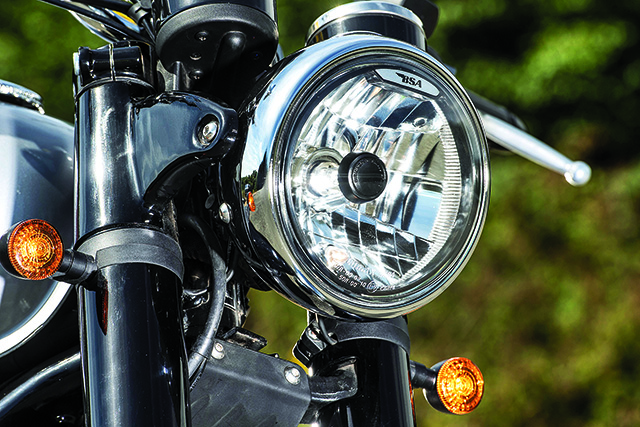
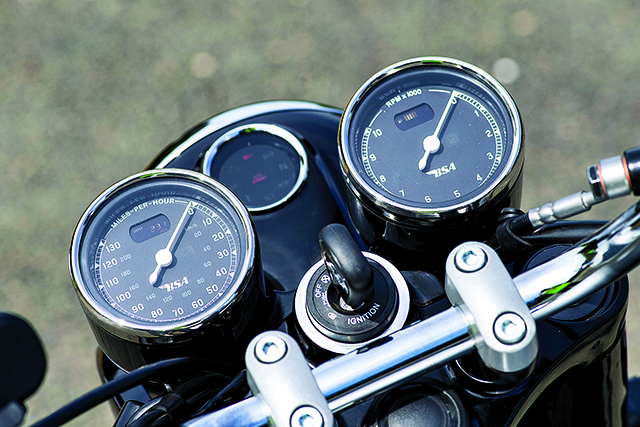
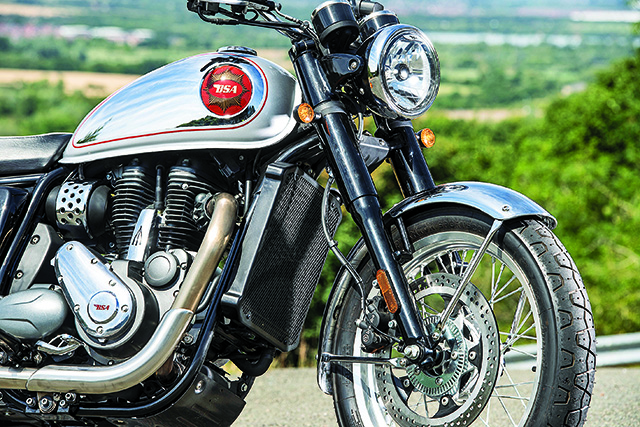
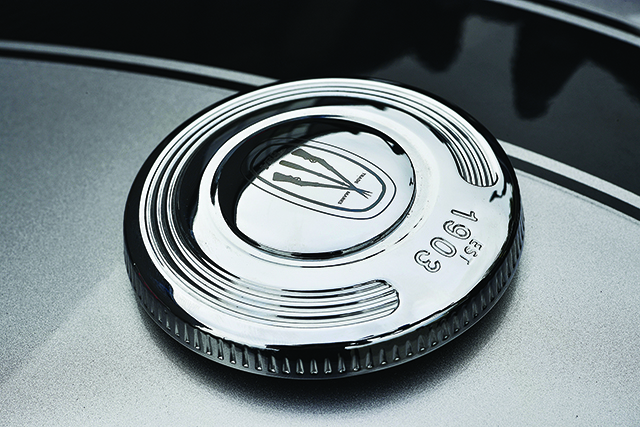
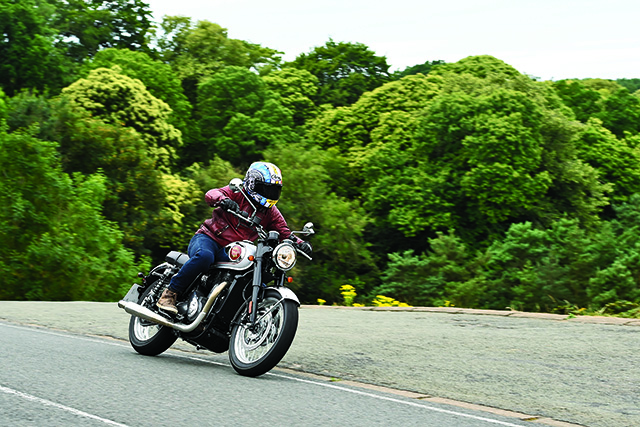
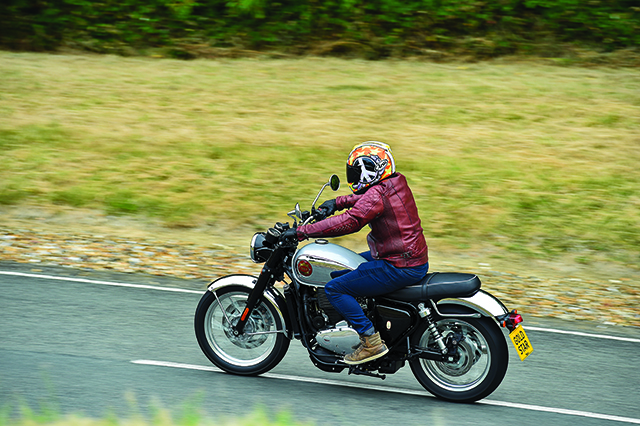

Leave a Reply